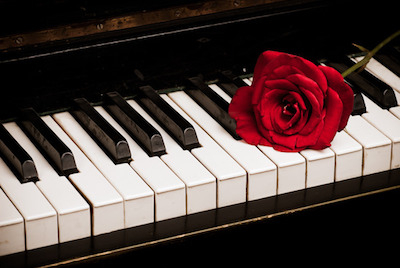If you’ve chosen to bring a piano into your home, it serves a unique purpose. Not only will it provide you with years of playability, but it will also serve as a piece of fine furniture for your home. Piano manufacturers understand this, and create a piano finish that will stand the test of time. Yet without proper maintenance, it will quickly fade.
A piano is finished with a variety of materials, from traditional lacquer to modern polyurethanes and polyester resins. A piano finish is designed to protect the wood from dirt and spills, and reduce the effects of modern day living impacting the quality of the instrument.
Today’s modern finishes are also designed to provide years of beauty without the need of polishes or waxes. In most cases, a piano can be maintained simply by keeping it clean and avoiding exposure to extreme elements, such as direct sunlight, hard temperature variations, humidity, and water.
Dust
The best way to clean your piano is with regular dusting. Dust is an abrasive element that can scratch the finish is wiped away with a dry cloth. Instead, use a feather duster to move dust away. You can also use a soft damp cloth, being careful to avoid getting the piano too wet. To avoid swirl marks, always wipe with long straight strokes rather than with circular motions. Wipe with the grain of the piano to ensure the look of your piano. Also, take care in only dusting the wood casing. Because some exposed parts within your piano are fragile, it’s best to leave those to an experienced technician who can handle the cleaning process when a regular tuning is scheduled.
Cleaning
Occasionally you may have to remove more than dust. Smudges and fingerprints can most likely be cleaned with a soft damp cloth. If heavier cleaning is needed, choose a small amount of a mild soap solution. Avoid using polish on your piano. Most manufacturers will recommend against using it because of the potential for damage to the finish and contamination of other parts of the instrument.
If you’ve purchased a used piano that seems to have a gummy, oily or streaked finish, it may be from too much polish. Adding more polish will not correct the problem. To remove polish, use a cloth dampened with a mild soap. Wipe with the grain, applying pressure to the dulled areas. Dry with a soft cloth. Repeat until you see results. Be careful not to cause white marks or streaks with an older finish. If stronger cleaning is necessary, you can choose a wood cleaner or wax remover, be sure to speak with a technician first to avoid damaging the finish further.
It may also be time to talk with a technician about repair or renovation. If damage has occurred to the finish, it may be impacting the playability of your musical instrument. A good technician will be able to provide guidance.

